Gardening For Climate Change
- horticulturist and gardening expertApril 22, 2023
Gardeners are an optimistic group of individuals. Otherwise, we would never plant a garden more than once. As Cornell University points out, “…the conditions for a truly successful, beautiful, and healthy garden, namely good soil, ample water, suitable air temperature, manageable pests -- and a dose of luck -- all need to be in balance with each other.” Despite the challenges, the rewards for gardeners and the environment far outweigh any hurdles encountered when growing your own food and managing your landscape.
Our changing climate of extreme weather conditions has added to the challenge of growing a successful garden. Prolonged periods of excessively high temperatures, drought, floods, and an increase in the number of heavy rainfall events influence the way we garden. Maps and graphics on pages 12 through 15 in Cornell Cooperative Extension’s Gardening in a Warming Climate show some of these changes that are occurring throughout the United States.
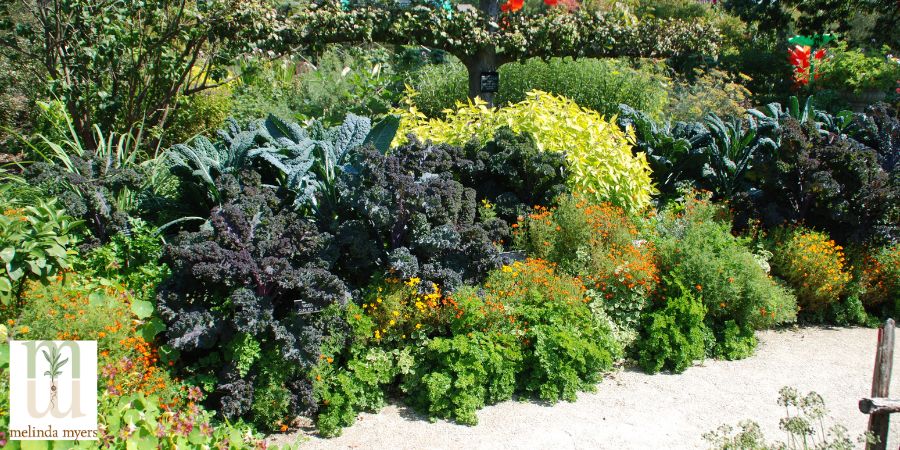
Edible and Ornamental Garden
Another one of the changes you may have noticed is a longer frost-free period when you garden. This has resulted in many plants sprouting and flowering earlier in spring, making them more susceptible to damage by more extreme late winter storms.
Allergy sufferers, I am one of you, are experiencing the side effects of a longer, more intense growing season. Plants grow more vigorously and produce more pollen as a result. The World Allergy Organization has said that climate change will affect the start, duration, and intensity of the pollen season, and it will increase the impact pollutants and respiratory infections have on asthma.
The change in climate also makes predicting pest and disease problems more difficult, and their impact is greater in gardens and agriculture. Plant-eating insect pests will consume more leaves and develop faster, and short-lived insect pests may live longer, adding to the pressure on our plants.
How Gardening Helps with Climate Change
Gardeners have an opportunity to make a positive impact on climate change. Implementing sustainable and smart gardening strategies can help increase your growing success and help reverse the accumulation of heat-trapping gases.
Preserving and Improving Soil Can Help Manage Greenhouse Gases
Starting at ground level since the soil is so important to gardening success makes a lot of sense. Look for ways to improve the soil and keep it covered year-round.
Soil forms the important foundation needed to grow a healthy garden. It also stores large amounts of carbon in the form of CO2 (the primary greenhouse gas) and organic matter from living and dead plants, microbes, and animals housed there. Better management of soil can capture and remove greenhouse gas emissions.
When land is cleared, wetlands filled, and soil tilled or left uncovered CO2 is released into the atmosphere. Exposed soil is also subject to erosion and nutrient run-off that pollutes nearby waterways.
Increasing the organic matter in the soil allows rainfall to readily infiltrate the soil reducing the risk of erosion and increases the soil’s water-holding capacity. This helps our gardens as we are experiencing more periods of intense rainfall and droughts.
Spreading a thin layer of compost over the soil surface each year adds organic matter and nutrients to gardens and landscapes. Enlist no-dig methods to minimize the disturbance of the soil that stores large amounts of carbon. You’ll also protect the soil from erosion, add organic matter and bring fewer weed seeds to the surface when using these methods. That means less weeding for you.
Keeping the soil covered with plants and mulch also protects it from compaction and erosion while helping keep the area surrounding your home cooler. Naturally cooling the space around your house helps reduce the need for air conditioning and reduces energy use.
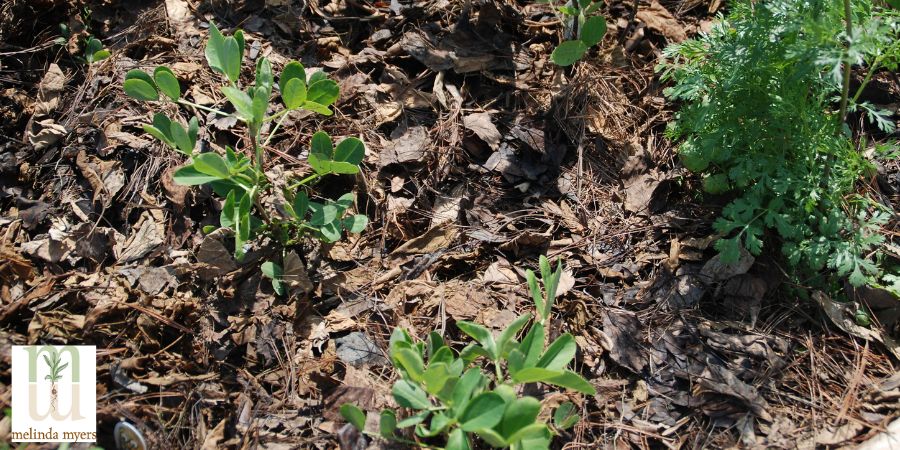
Garden with Leaf Mulch
Grow perennials and fill vacant annual vegetable and flower gardens with cover crops to keep the soil covered and filled with roots year-round. The roots provide pathways for water to enter the soil instead of running off the surface into nearby waterways and storm sewers. The roots, along with the soil help remove dust and pollutants from the water before it enters the groundwater. Plant roots leak sugars and other compounds that support soil microbes, and as the old roots die they add organic matter to the soil. All this helps create healthy carbon-storing soil that helps plants grow and thrive.
Create your own compost from plant-based food scraps, plant trimmings and fall leaves. You’ll save money by creating your own soil amendment and reducing the need for synthetic fertilizers. Turning garden trimmings and food scraps into compost instead of adding them to the landfill helps reduce methane and other greenhouse gases emitted from the landfill.
Using these strategies to build healthy soil reduces the need for synthetic fertilizers. Always start with a soil test when you feel your plants need a nutrient boost. The test results will tell you what, if any and how much fertilizer is needed.
When fertilizer is needed, consider using Milorganite, a recycled product that contains 85% organic matter and has been around for more than 90 years. Microbes are used to digest the nutrients in the water at the Milwaukee Metropolitan Sewerage District’s (MMSD) wastewater treatment plant. These microbes are kiln-dried into small pellets and tested daily and weekly. Milorganite has consistently met the EPA’s Exceptional Quality criteria since 1993, when the guidelines were created. MMSD converts a waste product into fertilizer and uses methane gas from a nearby landfill to reduce the use of fossil fuels for the drying process.
Grow Plants that Help the Environment
Grow a variety of plants suited to the growing conditions in your gardens and landscape. A diverse group of plants supports a healthy soil ecosystem that is better able to store carbon and promote healthy productive plant growth.
Select plants that are best able to tolerate the extreme heat and cold, wet and drought conditions we are experiencing with climate change. Consult your local University Extension Service for plants best suited to your region.
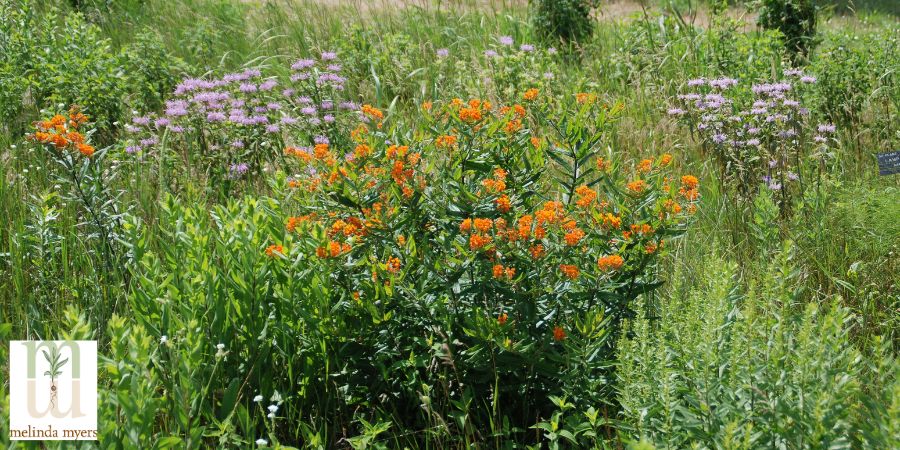
Native Plants
Grow native plants whenever appropriate and suitable for the growing conditions and your garden space. These plants slow and capture stormwater, and their deep roots provide pathways for water to infiltrate the soil. They have evolved with insects, songbirds, and wildlife providing them with an important food source and shelter.
Plant trees, shrubs, and groundcovers to help reduce use of fossil fuels for heating and cooling our homes. Properly placed trees, shrubs, and vines can provide welcome shade, direct cooling breezes toward the house, and block or deflect hot summer or cold winter winds away while allowing warming winter sunshine in to help reduce energy use. Planting trees in the right place for your climate can help reduce energy use by up to 25%.
Trees and shrubs also take up and store carbon for many years. According to Washington State University, “Trees in U.S. urban and community areas store 1.4 billion tons of carbon and continually take up more than 26 million tons a year.”
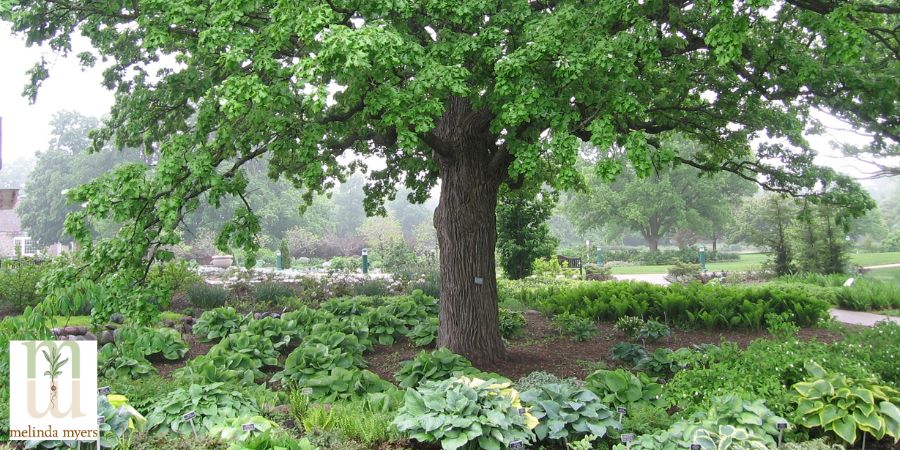
Hosta Garden under a Burr Oak Tree
Grow edible plants to boost the flavor and nutritional value and to be more climate-friendly. Food travels an average of nearly 1500 miles from the farm to the grocery store and, eventually, our homes. Lots of fossil fuels are used in the growing, packaging, and transport of these items. The more food we grow or buy from local farmers, the less we contribute to carbon emissions. Rotate your plantings as best you can to help maintain soil health while reducing insect and disease problems in the garden.
Keep Invasive Plants Out of Your Landscape
Avoid invasive plants that leave our gardens and invade nearby natural spaces. These bullies outcompete native plants disrupting the natural ecosystem wildlife depends upon. According to the North American Invasive Species Management Association, “ Invasive species can negatively impact climate change mitigation efforts in many North American ecosystems. Invasive tree pests reduce carbon sequestration rates in forests. Aquatic invasives decrease the resilience of green infrastructure to resist flooding and sea-level rise. Aquatic invasive species can also increase the temperatures, which negatively influences the hydrologic cycle. Invaded rangeland and forested habitats can release more carbon into the atmosphere through more severe uncontrolled fire. Invasive vegetation can reduce water flows in streams already struggling with lower water levels due to persistent drought.”
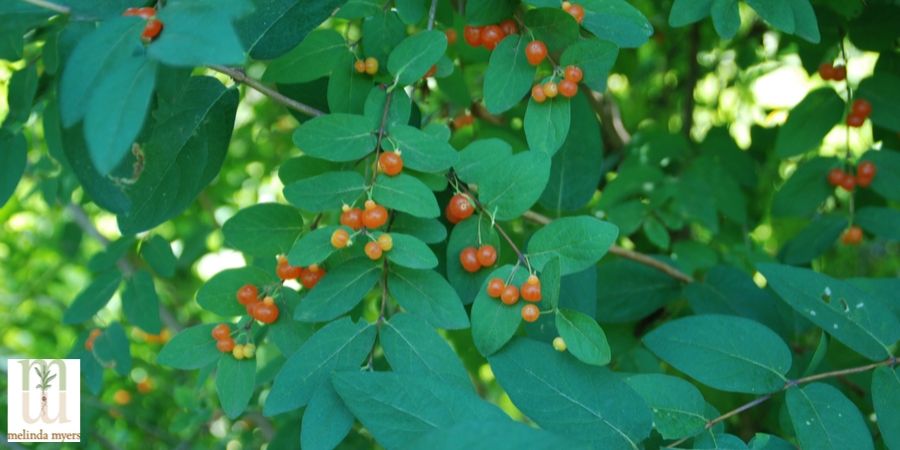
Honeysuckle Invasive Plant
Managing invasive plants is also good for the health of gardeners and others that enjoy the outdoors. Invasive barberry and honeysuckle create the perfect habitat for disease-carrying ticks. A collaborative research project found a 10 times higher rate of human disease-causing bacteria-infected ticks in honeysuckle-infested areas.
Manage Lawns in a Climate-friendly Manner
Lawns are a major part of many landscapes. They do absorb and temporarily store carbon, but some are released back into the atmosphere. Some of the climate benefits lawns provide may be undermined by the emissions related to equipment, synthetic fertilizer use, and generous watering.
Reducing the amount of lawn and considering less energy-consuming alternatives is an option many gardeners are enlisting. When growing a lawn, consider ways to make it more climate-friendly. Mow high to encourage deeper roots and healthier plants that are better able to outcompete the weeds and are more drought-tolerant and pest resistant. Leave grass clippings on the lawn to return moisture and nutrients to the soil. A season’s worth of clippings is equal to one fertilization. Use compost to improve the soil and fertilize the lawn. A quarter inch of compost spread over the soil surface provides 2 lbs of nitrogen per 1000 square feet. Use water wisely. Select more drought-tolerant grasses and allow the lawn to go dormant during hot dry weather. Yes, you will have more weeds, but you will use less water, and a dormant lawn is carbon neutral.
Further Reduce Your Carbon Footprint
Choose low-emission equipment when investing in replacements or new products. Gas-powered garden equipment is a major emitter of CO2. Consider hand and battery-powered options whenever possible.
Keep equipment serviced and running efficiently. Keep mower blades sharp to reduce fuel use by 22% and the lawn’s water use by 30%.
Emissions can also come from unexpected sources such as fossil fuel-based fertilizers and pesticides and peat-based potting mixes. Avoid fuel-based pesticides, and peat-based potting mixes and use, or better yet create your own compost to reduce CO2 emissions further.
Work with nature when managing pest problems in the garden. Tolerate some damage and wait for predatory insects like lady beetles, green lacy wings, and songbirds to eat and manage the problem for you. And if intervention is needed look for eco-friendly options like hand removal, a strong blast of water, traps, barrier, and sanitation.
Start by evaluating your current gardening practices. Look for ways to be more climate-friendly when managing your gardens and landscapes. Then begin tackling that list of changes. Together we can make a difference.

